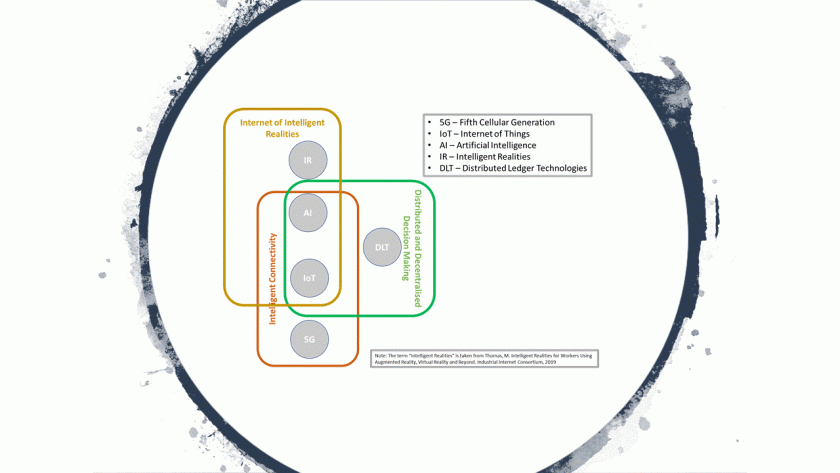
I am not aware that anyone has embarked in writing “The History of the Internet of Things”. If someone does it, the paper “The Computer of the 21st Century” by Mark Weiser (https://www.ics.uci.edu/~corps/phaseii/Weiser-Computer21stCentury-SciAm.pdf) should certainly be at the beginning of that history. It is one of the most important inspirations for imaging connected and intelligent spaces. Humans interact with those spaces through devices that enhance their capabilities. It is not a world of hardware, switches, and sensors, but a “new reality”, a mix of what we know and touch and what computing can create with hardware disappearing where we cannot see it. Yes, I am going too far, but it is where Weiser was heading to with his idea of ubiquitous computing and where the IoT wants to go. We are not there yet, but the boundaries of what is possible are expanding.
During last two years, I have put my research curiosity along those boundaries to see what they mean and what there is beyond them. Those boundaries are very unstable, because the technological influences provoking the IoT vision are different and coming rapidly. I started looking at what blockchain technology meant for the IoT. That inspired a report and a very successful university module. The trust in a chain of social and transactional objects in a connected space is not that far from Weiser’s vision!
I was then involved in what AI can do for the IoT. The project was primarily academic. It was a fantastic learning journey working with AI scholars, trying to absorb their research, bridging that with the market status of the IoT. Thinking that we can predict events, prescribe actions, and automating all that is, again, not far from Weiser’s vision.
During last year, I have also lived the experience of a 5G city trial. In the field, I discovered the beauty and the pains of 5G tests for IoT applications in city environments. 5G does not come without issues, particularly socio-economic and political issues, but it is a connectivity framework without which Weiser’s vision will not come.
After all this, it became clear that those boundaries were falling apart for a new era of convergence, that brings the IoT to a new level of development, one closer to Weiser’s vision, but together with other technologies. Another step in the land of convergence was offered to me by the Augmented Reality Enterprise Alliance (AREA). AREA represents more than 50 organisations researching and working in the field of AR for enterprises. AREA supports their members in a variety of ways. It also offers market and technological research for them looking at cutting edge themes for the community. I worked with AREA research team to explore the convergence of IoT-AI-AR in enterprise environments, primarily, manufacturing. It was a fascinating journey. It is not easy for researchers to have at your disposal an entire community to talk with. Despite the convergence IoT-AI-AR is seen at an early stage, the enthusiasm of the AR community was spectacular even in front of challenges not easy to overcome because not necessarily related to technology, but to the adoption and understanding of the technology. That optimism was justified by projects and proofs-of concept producing very promising results for manufacturing companies. Organisations working on IoT-AI-AR projects were able to address and solve key manufacturing problems (for example inefficiencies in using resources and downtime) creating new ways of working and engaging the workforce in novel modi operandi through AR devices. Mark Weiser was coming back on the production plant: an intelligent and connected space with enhanced humans engaging with that space though AR devices.
If I was the one writing “The History of the Internet of Things”, Mark Weiser and his research team would have been the strong inspiration of that history. He saw it. He tested it, but it was too early for its time. However, his vision has driven ideas for developing intelligent spaces in which enhanced humans live and work in a sustainable way. That will become real if technological frameworks (5G, IoT, AI, XR and so on) will work together. But to realise convergences, collaborations among different players with different skills are necessary. The new era of convergences calls for a new era of innovation ecosystems. The two are mutually necessary for making Weiser’s vision real.